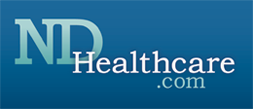July is national women’s health awareness month. Breast cancer is a major women’s health concern worth talking about, so here goes:
Two of my friends have become aware of breast lumps after an injury to their breasts. I encouraged both of them to get mammograms and both of them ended up being positive for breast cancer. I learned in pathology class in medical school that an injury to the breast can lead to cancer. Many internet resources I consulted in researching this blog post disagree with that statement. My thinking is this: If you get a breast injury, you may be more likely to really pay attention to that area and may find a lump that otherwise would go unnoticed. Regardless of the cause, if you find a breast lump, see your doctor immediately and ask for a mammogram.
In 2002, a study took place within the North Lancashire Breast Screening Service. The researchers used questionnaires and interviews to collect information from 67 women with breast cancer and 134 women (the control group) who did not have breast cancer. The study said that the women with breast cancer were more likely to report an injury to the breast in the last 5 years. From their results, the researchers thought there might be a link between injury and cancer. But this is only one study looking at a small group of women in one area. Larger studies are needed to prove or disprove these results.
Nowadays, the estimate of breast cancer incidence ranges from one in nine women to one in six women. That means that all of us will have a friend or relative with breast cancer in our lifetimes, even if we are lucky enough to avoid it ourselves. That is why awareness is so important. Although many new cases of breast cancer have no known cause or risk factors, you may have some increase in breast cancer risk if you have ONE of the following in your family.
* A mother or sister diagnosed with breast cancer before the age of 40
* 2 close relatives from the same side of the family diagnosed with breast cancer – at least one must be a mother, sister or daughter
* 3 close relatives diagnosed with breast cancer at any age
* A father or brother diagnosed with breast cancer at any age
* A mother or sister with breast cancer in both breasts – the first cancer diagnosed before the age of 50
* 1 close relative with ovarian cancer and 1 with breast cancer, diagnosed at any age – at least one must be a mother, sister or daughter
The affected relatives must come from the same side of your family (ie either your mother’s side OR your father’s side) and they must be your blood relatives. A close relative means a parent, brother or sister, child, grandparent, aunt or uncle, nephew or niece.
Reference:
On Thursday, I will continue this discussion by sharing suggestions on how to do self breast exams to catch any lumps early and get proper diagnosis and care as needed. I will also tell you how you can get a free mammogram if you happen to find a suspicious lump or are over the age of 40 when it is time to get a screening mammogram.
Margaret Philhower, ND






